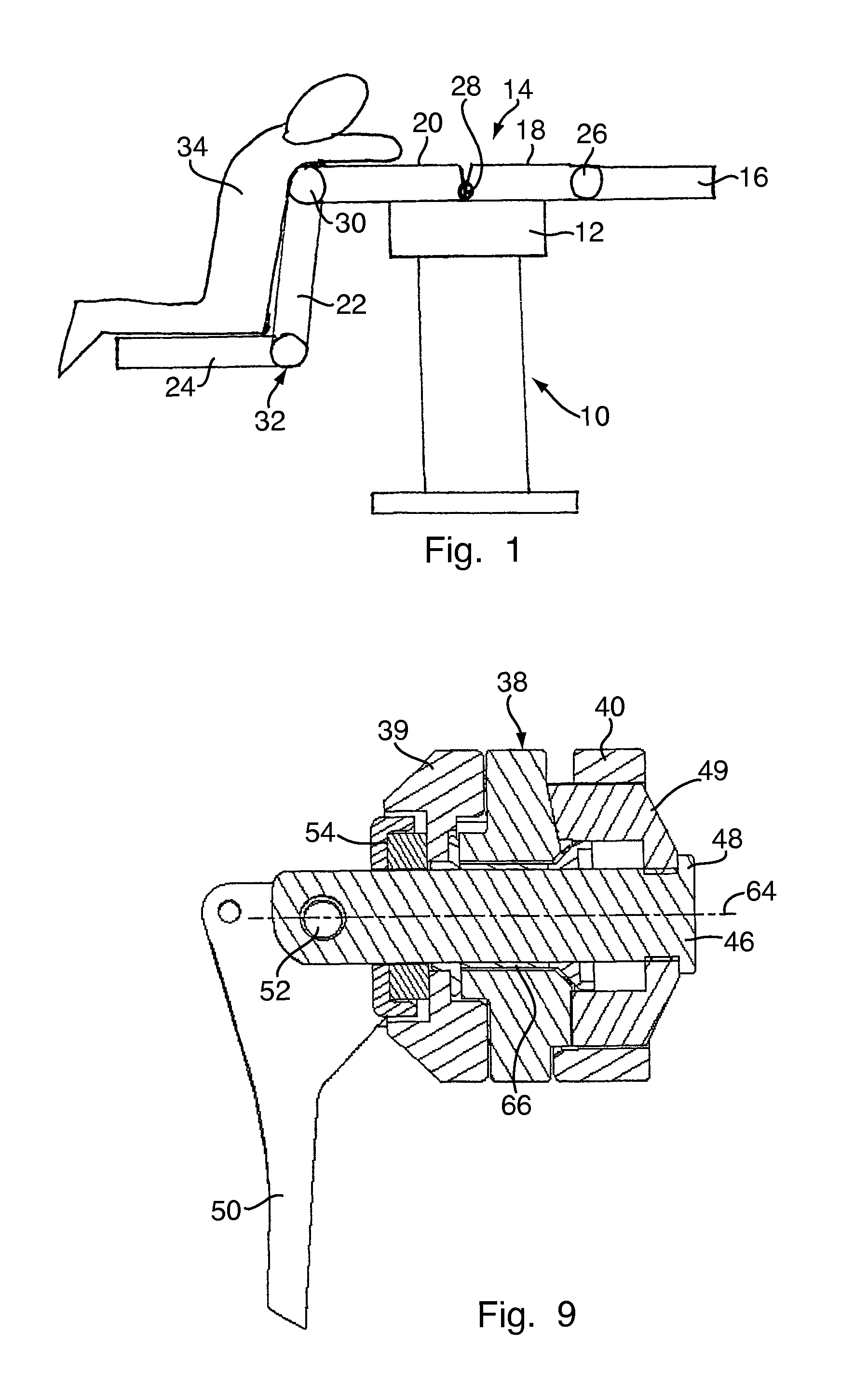Joint arrangement for the connection of two segments of a patient bed
a joint arrangement and patient bed technology, applied in the direction of mechanical devices, manufacturing tools, couplings, etc., can solve the problems of large risk, abrupt swinging downwards of the loaded bed segment, etc., and achieve the effect of high load-bearing capacity and functional reliability
- Summary
- Abstract
- Description
- Claims
- Application Information
AI Technical Summary
Benefits of technology
Problems solved by technology
Method used
Image
Examples
Embodiment Construction
[0023]FIG. 1 shows a highly diagrammatically illustrated operating table with a table column 10, on the column head 12 of which is arranged a bed 14 which comprises a plurality of segments 16, 18, 20, 22 and 24 which are connected to one another and are adjustable in relation to one another via joints 26, 28, 30, 32. The bed portions or segments 22 and 24 are set such that the segment 22 is directed almost vertically downwards and at its lower end carries the horizontally directed segment 24. The patient 34 kneels on the latter in what is known as a rectal support. It is obvious that the patient's weight rests almost completely on the bed segment 24. Particularly in such an instance, it is necessary to ensure that the joint 32 can be fixed in this position such that the bed segment 24 does not swing away downwards completely either gradually or suddenly, even if a tensioning mechanism closing the joint arrangement is inadvertently loosened or completely opened before the bed portion...
PUM
 Login to View More
Login to View More Abstract
Description
Claims
Application Information
 Login to View More
Login to View More - R&D
- Intellectual Property
- Life Sciences
- Materials
- Tech Scout
- Unparalleled Data Quality
- Higher Quality Content
- 60% Fewer Hallucinations
Browse by: Latest US Patents, China's latest patents, Technical Efficacy Thesaurus, Application Domain, Technology Topic, Popular Technical Reports.
© 2025 PatSnap. All rights reserved.Legal|Privacy policy|Modern Slavery Act Transparency Statement|Sitemap|About US| Contact US: help@patsnap.com



